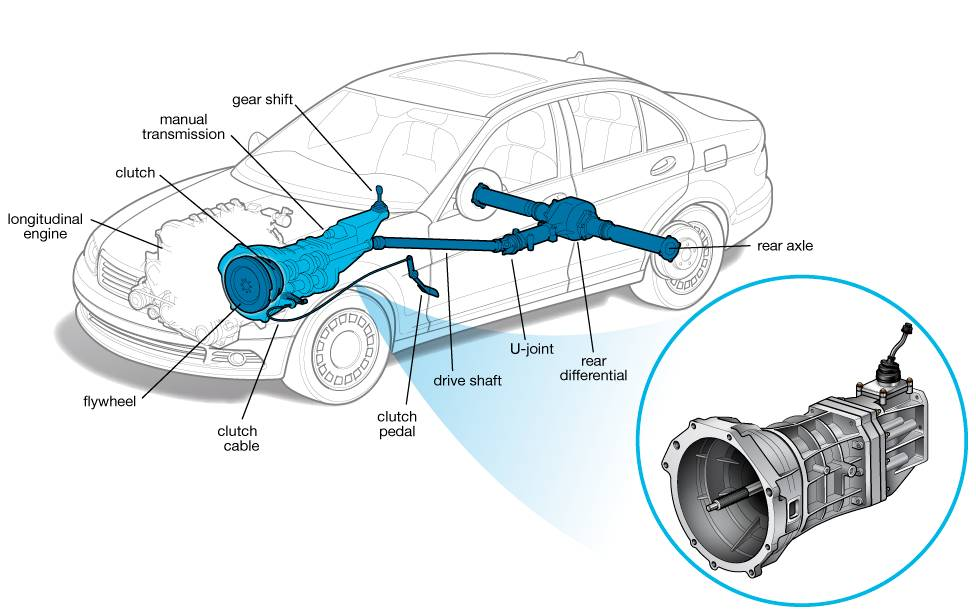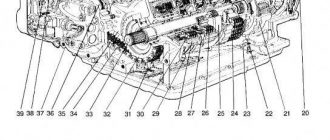Transmission in Cars
A transmission is a mechanical device that transfers power from an engine to the wheels of a vehicle. It allows the driver to change the speed and direction of the vehicle. Transmissions are typically located between the engine and the driveshaft.
There are two main types of transmissions: manual transmissions and automatic transmissions. Manual transmissions require the driver to shift gears manually, while automatic transmissions shift gears automatically.
Manual Transmissions
Manual transmissions are typically used in performance vehicles and heavy-duty trucks. They offer more control over the vehicle’s speed and acceleration than automatic transmissions. Manual transmissions are also more efficient than automatic transmissions, which means they can improve fuel economy.
However, manual transmissions can be more difficult to drive than automatic transmissions, especially for inexperienced drivers. Manual transmissions also require more maintenance than automatic transmissions.
Automatic Transmissions
Automatic transmissions are typically used in passenger cars and light trucks. They are more convenient to drive than manual transmissions, and they require less maintenance. Automatic transmissions are also more fuel-efficient than manual transmissions, although not as much as manual transmissions.
However, automatic transmissions can be more expensive than manual transmissions. They can also be less reliable than manual transmissions.
Types of Transmissions
There are many different types of transmissions, each with its own advantages and disadvantages. Some of the most common types of transmissions include:
* Manual transmissions are the most basic type of transmission. They require the driver to shift gears manually. Manual transmissions are typically used in performance vehicles and heavy-duty trucks.
* Automatic transmissions shift gears automatically. They are more convenient to drive than manual transmissions, and they require less maintenance. Automatic transmissions are typically used in passenger cars and light trucks.
* CVTs (continuously variable transmissions) are a type of automatic transmission that provides a smooth, seamless driving experience. CVTs are more efficient than traditional automatic transmissions, but they can be more expensive. CVTs are typically used in hybrid vehicles and some luxury vehicles.
* Dual-clutch transmissions are a type of automatic transmission that offers the performance of a manual transmission with the convenience of an automatic transmission. Dual-clutch transmissions are more efficient than traditional automatic transmissions, and they can provide a more engaging driving experience. Dual-clutch transmissions are typically used in performance vehicles.
Transmission Problems
Transmissions can experience a variety of problems, including:
* Slipping occurs when the transmission cannot transfer power from the engine to the wheels. This can be caused by a variety of problems, including worn clutch plates, a faulty torque converter, or a low fluid level.
* Grinding occurs when the gears in the transmission are not meshing properly. This can be caused by a variety of problems, including worn gears, a bent shift fork, or a damaged synchronizer.
* Leaking occurs when fluid leaks from the transmission. This can be caused by a variety of problems, including a damaged seal, a cracked case, or a loose fitting.
Transmission Maintenance
Transmissions require regular maintenance to keep them operating properly. Some of the most important transmission maintenance tasks include:
* Changing the transmission fluid is the most important transmission maintenance task. The transmission fluid lubricates the gears and other moving parts in the transmission. It also helps to dissipate heat and remove contaminants. The transmission fluid should be changed every 30,000 to 60,000 miles.
* Inspecting the transmission filter is another important transmission maintenance task. The transmission filter removes contaminants from the transmission fluid. The transmission filter should be inspected every 30,000 to 60,000 miles, and replaced if it is dirty or damaged.
* Checking the transmission fluid level is a simple but important transmission maintenance task. The transmission fluid level should be checked regularly, and topped off if necessary.
* Having the transmission inspected by a qualified mechanic is the best way to prevent transmission problems. A qualified mechanic can inspect the transmission for signs of wear or damage, and make necessary repairs.
By following these transmission maintenance tips, you can help keep your transmission operating properly for many years to come.






